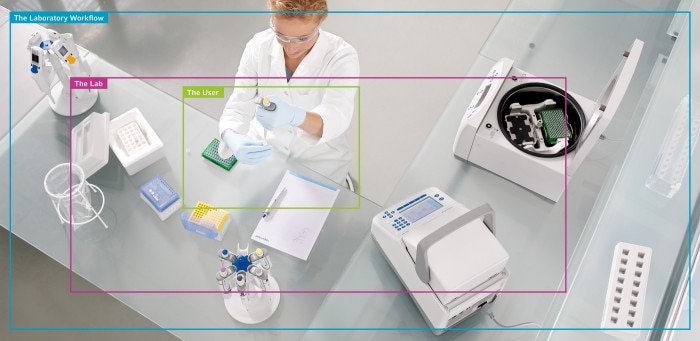MENU
FR | EUR
-
-
-
- Services pour bioprocédés
- Services pour centrifugeuse et rotors
- Services pour Mastercycler
- Services pour automates de pipetage
- Services pour congélateurs
- Services pour incubateurs
- Services pour agitateurs
- Services pour appareils de photométrie
- Service de contrôle de la température et de l’agitation
- Service pour pipette
-
-
-
-
- Services pour bioprocédés
- Services pour centrifugeuse et rotors
- Services pour Mastercycler
- Services pour automates de pipetage
- Services pour congélateurs
- Services pour incubateurs
- Services pour agitateurs
- Services pour appareils de photométrie
- Service de contrôle de la température et de l’agitation
- Service pour pipette
-
FR | EUR
-
- Centrifugeuses de paillasse
- Centrifugeuses au sol
- Centrifugeuses réfrigérées
- Microcentrifugeuses
- Centrifugeuses multi-fonctions
- Centrifugeuses haute vitesse
- Ultracentrifugeuses
- Concentrateur
- High-Speed and Ultracentrifugation Consumables
- Accessoires
- Tubes
- Plaques
- Gestion des appareils
- Gestion des échantillons et des informations
- Produits IVD
Aucun résultat trouvé
Chercher des suggestions

Ergonomics: Why Pipetting Ergonomics is a Key Issue
Lab Academy
- Pharma
- Biotechnologie
- Santé et médecine
- La vie au labo
- Le quotidien au labo
- Pipetage et distribution
- Efficacité
- Reproductibilité
- Ergonomie
- Automatisation
- Test
Whether on board the International Space Station, on a research vessel, in a high-security laboratory, or at other non-automated laboratory workplaces, one thing applies to them all: manual pipetting is one of the most central and, at the same time, most error-prone tasks in the lab.
While pipettes can be calibrated, devices can be adjusted, and measurement protocols can be perfected, the human factor remains comparatively unpredictable. "The main risk of error in pipetting is the operator," explains Peter Schmidt, Business Manager for Pipettes at Eppendorf. "When you take up the liquid, you should immerse vertically and only to a certain depth, so that the liquid is not pressed in more than intended. Then wait long enough for the liquid inside to reach a steady state – this is especially crucial for large volumes - and only then dispense it, at the end sliding along the wall.“
According to Schmidt, the fact that such operations have to be carried out in the same way, with high precision, over and over again, makes fatigue a major problem: "When you're tired, it's difficult to immerse precisely the same way and do it evenly over time. And that makes pipetting ergonomics a factor in the quality of the result. A tired hand cannot work as well as a rested hand. The more ergonomic the pipette is, the longer good results can be achieved."
In order to find extreme operating conditions in this regard, one does not even have to look into space or into the Arctic region, Schmidt emphasizes: "If someone is pipetting for eight hours a day, this means extreme operating conditions from an ergonomic point of view." Since the beginning of this millennium, the pipetting ergonomics have therefore been a major consideration for Eppendorf, which has since developed improvements far beyond just the physical aspects of weight and operating force, including other issues like cognitive and workflow ergonomics.
According to Schmidt, the fact that such operations have to be carried out in the same way, with high precision, over and over again, makes fatigue a major problem: "When you're tired, it's difficult to immerse precisely the same way and do it evenly over time. And that makes pipetting ergonomics a factor in the quality of the result. A tired hand cannot work as well as a rested hand. The more ergonomic the pipette is, the longer good results can be achieved."
In order to find extreme operating conditions in this regard, one does not even have to look into space or into the Arctic region, Schmidt emphasizes: "If someone is pipetting for eight hours a day, this means extreme operating conditions from an ergonomic point of view." Since the beginning of this millennium, the pipetting ergonomics have therefore been a major consideration for Eppendorf, which has since developed improvements far beyond just the physical aspects of weight and operating force, including other issues like cognitive and workflow ergonomics.
Lire moins

What makes a pipette an ergonomic device?
On the one hand, ergonomics refers to the pipette itself. It is important to be able to hold it in different ways in the hand and use different grip patterns throughout the day so that the muscles do not stiffen and fatigue is avoided, Schmidt explains: "This is why pipettes tend to be round and the user can grip them with different grip patterns - from the front, the finger hook between the index finger and middle finger, and in different positions." The many different hand positions allow for long, fatigue-free work. But the forces required for operation and the accessibility of the operating elements are part of the pipetting ergonomics as well." The operating forces are adjusted to achieve an optimum balance between ease of movement and sensory feedback. Furthermore, the joints should not be angled more than necessary. And small hands must be able to reach the button while large hands should be able to work with it just as well as small hands - this determines, for example, the optimum circumference of the pipette." On the other hand, an optimization for certain hand sizes would not be an appropriate solution, as several researchers, especially at universities, usually work with the same pipette sets. Color-coded pipette tips or haptic feedback when adjusting the volume are examples of cognitive ergonomics that support work processes and avoid both uncertainty and unnecessary stress in laboratory work.
When a pipette's ergonomics are a matter of life and death
Fatigue-free working is not the only motive of ergonomics - in extreme cases, it can even determine life and death, for example when working with highly pathogenic viruses in the BSL-4 laboratory: "We absolutely have to make sure that gloves do not get caught or pinched and tear. This is also part of the pipetting ergonomics," explains Peter Schmidt: "The gloves themselves have relatively little effect on usability. But under no circumstances may they be destroyed during work. When adjusting the volume, the edges should therefore be slightly rounded everywhere, as sharp edges could rub through the glove in the long run. And when you press and release the eject button, the glove must not get caught and torn apart.” In addition, there must not be any edges or pinch points on the pipette in which the glove could get stuck. Neglecting this aspect when setting up a laboratory can be life-threatening. "We have competitors who use a wheel for volume adjustment below the finger hook in the middle of the handle. This is where the glove can get stuck between the housing and the wheel. If you pull it, the glove can rip," warns the pipette expert. And this would be just one example of pipettes that are less suitable for special operating conditions. Metal ejectors that can be pulled off could also pose a safety risk due to sharp corners, edges or corrosion. "Therefore, in our pipettes, almost all parts touched by the user are made of plastic to prevent corrosion and injury from sharp metal edges. Any metal parts are rounded and made of a special stainless steel highly resistant to chemicals."
Keeping the balance
While in single channel pipettes the center of gravity is usually relatively high up in the handle, balancing is not critical here. Due to their large head, electronic pipettes also have an inherently high center of gravity. But, things are completely different with mechanical multichannel and special pipettes, such as the new Move It® pipette, explains Schmidt: "Some of these pipettes have a rather heavy lower part, which is really unpleasant when working for long periods of time, because the user has to hold against the pipette all the time. This is why we counterbalanced the Move It® with stainless steel elements in the control knob and in the volume adjustment wheel." The adjustable Move It® pipette is a perfect example illustrating the pipetting ergonomic optimization of new products at Eppendorf. For perfect counterbalancing, stimulation current tests were even carried out on users' upper and lower arms. In order to make the knob for adjusting the distances between the cones as large and easy to use as possible, it was attached to the front of the pipette. The lower part has been designed to rotate so that users can grip and hold the pipette in a way that is particularly comfortable for them and can also change their hand position regularly.
Intuitive operation
"There was a great reluctance among users of mechanical pipettes to get involved with electronic pipettes," reports Peter Schmidt: "Many feel that they are losing control over the pipetting process. That's why we have equipped the electronic Xplorer® series with a tilt mechanism: To aspirate liquid, press the upper part of the tilt, to release the lower part. With this system, the piston movement can be stopped, reversed, or continued at any time. Thus, a click of the button does not mean that the pipette unstoppably carries out the dosage. However, for a new pipette which we are currently designing, we are still considering whether to install a tilt mechanism again or switch to a single button operation, as it is common in the market. The single-knob operation is not as flexible as the tilt mechanism, because it only allows a fixed sequence of pick-up, delivery and blow-out and the user cannot repeat individual steps. But both concepts have their supporters - and you can see that intuition somewhat happens in the eye of the beholder.” When developing new pipettes, Eppendorf works a lot with prototypes that are handed over to customers for testing. "Ideally, they will ask whether they really have to return the prototype. Then we've been very successful," says Schmidt. In any case, the feedback from customers helps to identify potential for improvement and to use it for further development.
Lire moins

Laboratory setup – make your lab a better place
The pipetting ergonomic optimization of the workplace should not be limited to the pipettes being used. The PhysioCare Concept® describes how an ideal workplace should be configured. In principle, all tools and equipment should be arranged in a semicircle around the user so that their distance from the upper body is approximately the same. Thus, complex workflows such as PCR can be completed as fatigue-free and efficiently as possible. In order to make optimum use of the available space, a three-dimensional arrangement like the one in the International Space Station can be feasible as well, adds Schmidt. And he also has a simple but practical trick up his sleeve: "Clamp large paper clips onto a shelf - they are a common way of holding single-channel pipettes within easy reach when space on the work surface is running short and no wall brackets are available.”
Lire moins

